What if there was a way to quickly access the inner workings of your psyche? What if there was a way to easily and accurately take a snapshot of your unconscious?
There is.
Hello, folks! Dr. Z here, and I’m back to share my latest development in psycho-spiritual research!
It’s called the HA, and it’s a quick and painless way to peer into your own mind.
That’s right: No surgical anesthetic, no fancy tools. Just listening to Dr. Z and doing everything she says!!
Here’s how it works:
HA stands for Hidden Agenda.
(I know, you probably thought a HA was a spontaneous outburst of mirth, but you were wrong. The HA is spontaneous, and it’s an outburst of sorts, but no snorting or guffawing are involved. At least, not usually.)
We all have a Hidden Agenda – a HA – whether we know it or not. The HA is our outlook on life, the way we see the world.
It’s simple, it’s strong, and it comes in three basic forms: Yes, No, and Maybe.
Before I go into detail about these 3 forms of the HA, let me tell you how I came upon my latest fascinating discovery.
It started with a verbal tic.
A few months ago, I noticed a pattern in my conversations with others. I noticed that, in my responses to other people, I began my replies with the word “No.” (More precisely, I would use the phrase, “No, but. . .”)
Even when I would eventually agree with the person I was talking to, I would still begin my phrases with that oh-so-telling word:
It got me thinking. Why the “No”? What was my verbal tic about?
I realized that I had a Hidden Agenda, a HA, and that my HA was to push away new ideas. Even if I eventually absorbed or implemented these ideas – or people, or situations – my first response was to distance myself from them.
This is not to say that the word “No” is a bad thing.
There are times when it’s good to take a step back and assess a new situation. There are times when we need to set a boundary, and the word “No” is a vital part of that.
That’s not what the “No” HA is about. The “No” HA is a basic “No” to life. It’s an attitude, a set point.
In my case, I came to realize that my “No” was an automatic reaction to almost everything in my life.
I was no longer Dr. Z.
I was Dr. No.
Like the villain in the James Bond movie. Next thing I knew, I’d be wearing a freaky glove and puffing on a overly-dramatic cigarette.
It wasn’t pretty.
Once I realized that I had become an unconscious “No” machine, I started to watch the words that came out of my mouth.
I started to experiment with beginning my phrases with “Yes” instead of “No.” It felt good, though scary at first. I felt an opening, a softening towards the world around me.
This process led me to become aware of the HA and its three forms: Yes, No, and Maybe.
What do these look like? I’ll tell you!
The 3 forms of HA:
1. The “No” HA
The “No” HA, as I described above, results in avoidance and resistance. When we’re operating from a “No” HA, we immediately discount new experiences. Although we may eventually incorporate aspects of the new experience, our initial response is one of negation.
A “No” HA leaves us closed and contracted. We’re less likely to change, less likely to allow ourselves to be touched by others and the world around us. The “No” HA is a growth inhibitor.
2. The “Maybe” HA
The “Maybe” HA is just like it sounds. When we’re operating from a “Maybe” HA, we’re not pushing away new experiences, but we’re not saying “Yes” either.
We may have a hard time making decisions. We may have difficulties committing to anyone or anything. The “Maybe” HA leaves us with a permanent seat on the fence.
(And who wants to sit on the fence all day? Maybe you do, maybe you don’t. Or maybe you want to think about it all day. On the fence.)
3. The “Yes” HA
A “Yes” HA is a glorious thing. When we have a “Yes” HA, we are open and available to the world. The “Yes” HA allows us to be intimately in tune with our surroundings.
When we say “Yes” to the world, we are aware of the good in everything. We can more readily find the positive in each and every situation. A “Yes” HA sets up a continual cycle of positivity, as we look for and find good and more good in every area of our lives.
So here’s the question: What’s your HA?
If you don’t have a clear sense of what it might be, pay attention to the language you use. Notice your verbal tics. Notice the way you start and end sentences. What does your language tell you about your worldview?
You may become aware that you have different HAs in different areas of your life. You may have a “Yes” HA at home and a “No” HA on the job. The starting place is to simply notice, without judgment.
Then, once you’ve done this, you can start to judge yourself.
Not!
(That was a test. I wanted to see if you were paying attention!)
Once you’ve uncovered your HA, it’s up to you to decide what you want to do with it. Maybe you have a “No” HA and you like it. It makes you feel safe and protected. Or perhaps you have a “Maybe” HA, and you like the sense of free-flowing ambiguity it gives you.
It’s a free country! You can operate from whatever HA you want!
But here’s the question: How’s it working for you? Whatever your HA, how is it affecting your life?
In my case, I realized that I was unconsciously leaning on “No.” And my “No” was leaving me more closed and contracted than I wanted to be.
So I’m adjusting my HA. I’m leaning into “Yes.” I’m watching my language and leading with the affirmative.
After all, the Divine says Yes. The Divine is always saying Yes. Yes to creative expansion. Yes to unity. Yes to harmonious oneness.
And I don’t know about you, but I’m taking my cues from the Divine!
What’s your HA? How’s it working for you?



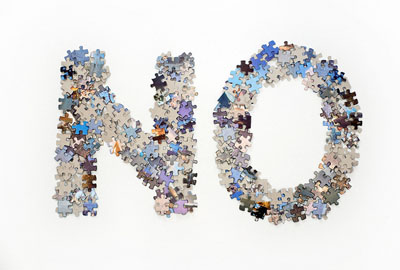
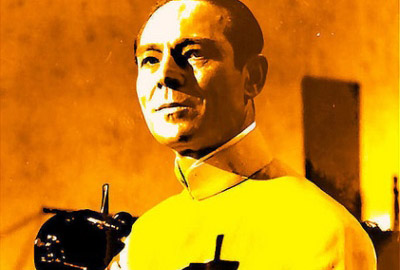
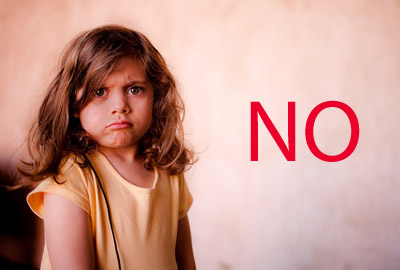
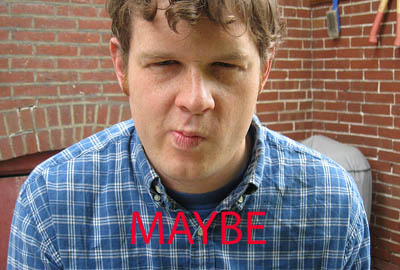
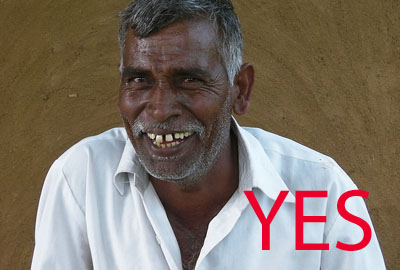
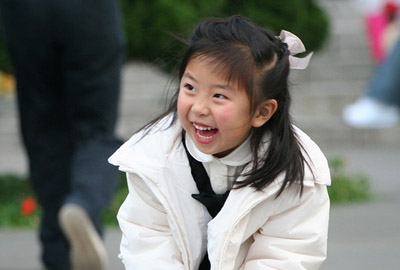
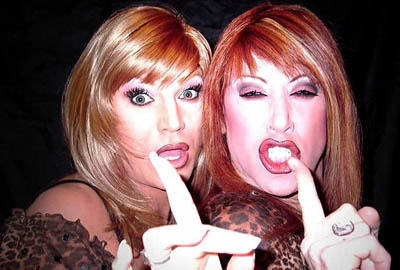

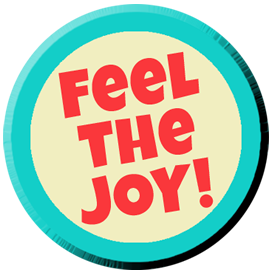
good morning, z. happy tuesday!
i have different HAs for different occasions. but as a rule, i try to stay in maybe-land until i can make a decision. for me, it’s not always about staying on the fence or avoiding decision making but it gives me an opportunity to evaluate the options: “is this something that is really calling me or do i just not want to disappoint this person?” or “can i really take on another large project and maintain self care?” etc. once i have considered the options, i can say yes or no and feel comfortable with it. it helps me stay open to possibilities.
that said, maybe-land can also be a stalling mechanism for when i don’t want to make a decision. in that case, i say “maybe” and hide somewhere where no one can find me. it’s saying no without actually saying no. that part doesn’t serve me.
thanks for making me think! now i’m going to go do some work around it. 😀
til soon,
xos
Howdy Squirrel,
Glad that you’re thinking. Nothing better than a pondering squirrel! 😉
When I was writing this post, I found myself needing to make a continual distinction between an ability to say No and set boundaries, and the No HA. I finally decided that they’re two different things. So while it’s extremely important to be able to turn things down, and set space around my life, that doesn’t mean I have to have an overall “No” attitude, i.e. a No HA.
So, for me, moving to more of a Yes HA stance does not mean that I become a doormat, or start to say Yes to every opportunity. Bottom line, I’m saying Yes to my life. Which means saying No to things that don’t serve my Yes. If that makes sense. 🙂
I will be interested to hear your further ponderings on this subject. When they emerge from the Land of Maybe. Maybe. 😉
XOZ
i agree. setting boundaries and being a negative nelly are absolutely different things. saying “no” may be saying “yes” to yourself and vice versa. i try to go with what feels right for me.
for me, they feel different in my body. “no” feels very constrictive, “yes” feels more flowing and “maybe”… meh.
being in maybe-land keeps me more open to possibilities than “no-way-ville” (where i used to have an apartment). but i’m not always ready to just jump in to a new experience, either. maybe-land is a safe haven for me. until i use it to avoid responsibility, but that’s a different story altogether.
fun fact: i’m way more likely to say “yes” when being asked by someone i know, trust and respect than by someone i don’t.
i do spend much more time in yes town nowadays. (i even bought a timeshare there!) but where i go everyday always depends on my attitude. i get to decide where i go every day when i wake up in the morning. 🙂
love,
xos
I hear that apartments in “no-way-ville” are extremely expensive. At least, that was my experience. 😉 And anytime I go back to visit, I’m amazed at how cramped the quarters are.
And congrats on the timeshare purchase! I suspect I’ll be seeing you around the grounds from time to time.
Also, I hear you in the statement about you-as-the-final-word. It’s definitely up to you. Thank God! 🙂
About my HA………..I recently discovered I may be a HArlequin….based on information about my birth mother’s relationship to the entertainment industry during the “best of times”…Friends like Garbo, Monroe, Garland, Sinatra, Wayne and more………Now that Wikipedia suggests, a harlequin is godly and often referenced as a happy jester, I accept this information and your information and watch for any tics..God Bless
Hello Michael!
An interesting twist. HArlequin as an aspect of the HA. Given the description of a godly and happy jester sort, it sounds like a Yes HA would probably be the HArlequin’s most likely approach. But I supposed that the verbal tics will tell the whole story! 🙂
XOZ
Love it Z! I’ve been working on changing this exact thing, but didn’t have such a cool way of boiling down the HA to one word! My becomes oh-so-obvious when I look at it that way. So if I change from a No HA to a Yes HA, I’m a more OA (Open Agenda?) and saying hahaha more often because I am appreciating all that is! Thanks for this!
Naava,
Nice! I like the OA – it sounds like aloha! And saying hahaha more often. Always a good thing.
Here’s to more Yes!
XOZ
Well, er uh…never thought I had a HA until now so hummmmmm. I guess I tend towards fence sitting or all out going for it. I need the fence sometimes to feel safe. All out YES is that sense of using a bungy cord in life and God aka Higher Power is holding the rope.
Thanks for helping me make the River wider. This is a nice pond-er.
Learning Life,
River
Hi River,
Wow – I like the bungy cord analogy. Though I’m starting to feel a little sea sick. 🙂
As for the HA, it’s just my latest pondering. Who knows what it all means? Well, I guess the bungy cord holder does. And bungy jumping is fun. Or so I hear. I mean, I’m moving to more of a Yes HA, but I didn’t say I was going THAT far! 😉
Happy Trails!
XOZ
Hi Z, I have to admit that (as a typical scorpio) I have a sneaky, custom HA. I call it “yeh, but…” It’s essentially a No or a maybe, but it’s tricky in that I pretend to agree, but sometimes I’m not even really receptive to new information at all, and just want to create an opening to state my own opinion. Ouch…self-awareness can be a bear! Thanks, good food for thought!
Hi Jill,
Tricky tricky! That’s awesome that you’re so aware of yourself, and thus your HA. I must admit, it is a custom-built HA. Isn’t it amazing what our minds can create, often without our awareness? Thanks for adding to the conversation! 🙂
XOZ
I am now reborn to the AHA moment….
this is big….the Audible Hidden Agenda…is HUGE….
Listen and learn…..Thanks for sharing….this truly psychological phenomenon….
Where do the yes,but, maybe people fall…..
Hi Dianne,
From HA to AHA – how perfect! Glad that you enjoyed the post, and the lurking psychological phenomenon. It’s amazing what hangs out in our unconscious, isn’t it?
Your last line sounds like a song. The HA song. . .
XOZ
Dear Z,
YES, YES, YES : ) ) YOU ARE A FANTASTIC WRITER AND A SO VERY WISE WOMAN : ) ) YES, YES, YES!!!!!!!! I LOVE TO READ YOUR BLOG <3
SUSAN
Hi Susan,
I’m glad you’re enjoying the blog!
XOZ